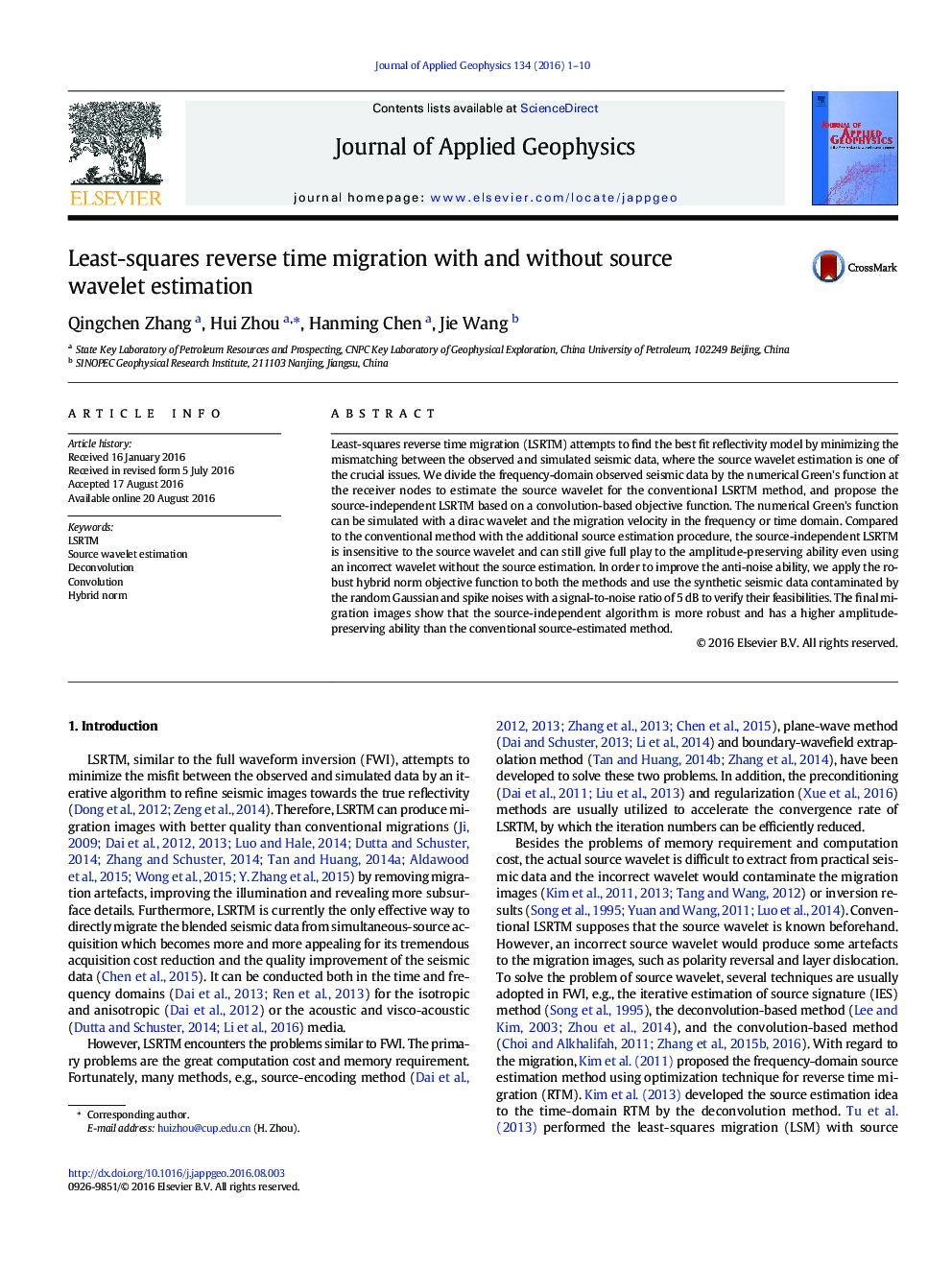| Article ID | Journal | Published Year | Pages | File Type |
|---|---|---|---|---|
| 6446982 | Journal of Applied Geophysics | 2016 | 10 Pages |
Abstract
Least-squares reverse time migration (LSRTM) attempts to find the best fit reflectivity model by minimizing the mismatching between the observed and simulated seismic data, where the source wavelet estimation is one of the crucial issues. We divide the frequency-domain observed seismic data by the numerical Green's function at the receiver nodes to estimate the source wavelet for the conventional LSRTM method, and propose the source-independent LSRTM based on a convolution-based objective function. The numerical Green's function can be simulated with a dirac wavelet and the migration velocity in the frequency or time domain. Compared to the conventional method with the additional source estimation procedure, the source-independent LSRTM is insensitive to the source wavelet and can still give full play to the amplitude-preserving ability even using an incorrect wavelet without the source estimation. In order to improve the anti-noise ability, we apply the robust hybrid norm objective function to both the methods and use the synthetic seismic data contaminated by the random Gaussian and spike noises with a signal-to-noise ratio of 5Â dB to verify their feasibilities. The final migration images show that the source-independent algorithm is more robust and has a higher amplitude-preserving ability than the conventional source-estimated method.
Keywords
Related Topics
Physical Sciences and Engineering
Earth and Planetary Sciences
Geophysics
Authors
Qingchen Zhang, Hui Zhou, Hanming Chen, Jie Wang,
